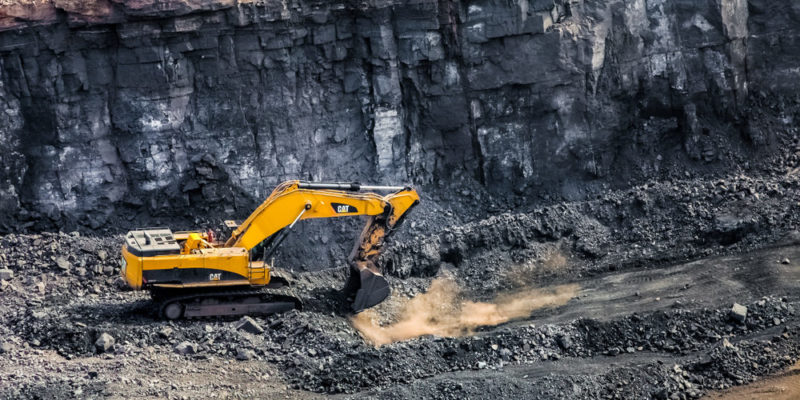We explain what the raw material is, what its extraction processes are and how it is classified. Also, its characteristics and examples.
What is the raw material?
Raw material is understood to be any element extracted from nature in its pure or relatively pure state , and that is feasible to be transformed, through manufacturing or industrial processing processes, into final consumer goods or semi-finished goods that in turn serve as input to secondary industries.
There are different types of raw materials, as many as processes for the production of consumer goods, and their obtaining from nature is also diverse, since some are directly within our reach and others must be sought in different environments and even derived or synthesized from of more ordinary materials.
In industrial and post-industrial society, the demand for raw materials is abundant , not only to produce consumer goods, but also to satisfy energy production processes , such as fossil fuels.
However, the main raw material producing countries are from the so-called third world , since they consume the processed products that developed countries sell to them in exchange for their own raw material.
Raw material extraction

The extraction or obtaining of a raw material can be in different ways , since mineral elements must be mined, synthetics produced artificially, etc.
Some of them are safe processes with a manageable ecological impact, while others are particularly disastrous with the environment and require special measures to minimize the damage they do to the ecosystem .
The same occurs with certain intermediate processes, which by-produce polluting matter that, if returned to the environment, causes ecological damage.
Types of raw material according to their origin

The raw material can be of the following types, depending on its origin:
- Of vegetable origin . Coming from trees, plants , seeds, fruits and other natural derivatives, such as wood , rubber, cork, among others.
- Of animal origin . Elements that form or were part of animal life, whether of their bodies ( wool , leather, skins , etc.), their vital processes (milk, pearls, silk, etc.), or remains (ivory, fat , etc.) ).
- Of mineral origin. From terrestrial deposits or from amalgams and mineral mixtures with other materials, such as iron , copper , gold , silver , etc.
- Of fossil origin. Organic waste fossilized and subjected to millenary sedimentation processes that give rise to hydrocarbons , such as oil , natural gas or coal.
- Of liquid or gaseous origin. Elements present in ordinary liquid or gaseous substances , such as water , air gases , nitrogen , etc.
- Synthetics. Those that do not exist in nature and were created by man, such as certain isotopes of Uranium.
Types of raw materials according to their process
Another possible classification of the raw material has to do with the industrial process in which they are inserted:
- Raw materials used in their natural state. Those that do not need to be refined or transformed for use, but are valid raw, such as construction materials, sand, natural stone, wood, etc.
- Processed raw materials. Those that are used in an intermediate process to manufacture another primary input, or that require refinement or processing before reaching their final destination and being converted into a manufactured product. For example, oil, from which polymers are derived , or glass , which must first be made from silicon and sand.
Abundance of raw materials

Depending on the raw material, its abundance can vary. The common thing is to consider it based on three categories:
- Renewable raw material. That which replenishes itself naturally, or whose source of origin is inexhaustible, if the pertinent considerations are taken in obtaining it.
- Non-renewable raw material. The one whose reserves, eventually, will be depleted, as occurs with oil.
- Super abundant raw material. That which is not strictly renewable, but which exists in such a state of abundance that it is considered practically infinite.
Economic role
The raw material is considered the basis of the industrial process , that is, the starting point of the production chain, since without it there would be no basic elements to produce other more elaborate ones. That is why the price of the raw material affects the prices of the products made from it, and thus the markets of both are related.
Difference between raw material and finished product

Unlike manufactured products that have undergone transformation and manufacturing processes, processes that change their nature and combine it with other elements, the raw material is in its virgin state, as it exists in nature, unprocessed.
Primary and secondary raw material
The raw material is also linked to the industrial sectors it is interested in , such as the primary sector (extractivist), the secondary sector (manufacturing) and the tertiary sector (services). It will then be understood as raw material of a primary, secondary or tertiary type that which each sector deals with.
Direct and indirect raw material
A distinction is made between direct and indirect materials in the development of a product, based on how necessary they are to manufacture it. Thus, the direct raw material represents the bulk of the cost of production and constitutes the manufactured object itself, such as the leather and rubber of some shoes; while the indirect raw material is required secondarily in the process, for example, to pack the product or for its presentation, such as cardboard and the paper in which they are wrapped.
Raw material producing countries

The great raw material products in the world of the 21st century are usually countries of the so-called third world, especially in Asia and South America , where there are abundant mineral, wood and biological resources to export. The same occurs with oil and hydrocarbon exporting countries, which are usually from the Middle East or the American continent (such as Mexico , Venezuela , Bolivia , etc.).
The great paradox of these countries is that they export the raw material from which the industrialized countries manufacture consumer objects, and then consume these manufactured goods at a higher price per unit, remaining in an importing and dependent economy .
Examples of raw materials
Some common examples of raw materials are:
- Wood, cork and rubber
- Oil, coal, natural gas
- Coltán, for the electronics industry
- Gold, silver, precious metals
- Uranium, Bauxite, heavy metals
- Ivory, silk, fur, leather
Anas is an editor of a prestigious publishing company in the United States. She studied Mathematics in Arizona. Anas is also a teacher and one of her long-term goals is to build an institution that offers free education to everyone who are financially not stable. .
Leave a reply
Your email address will not be published. Required fields are marked *Recent post

Sport: What Is It, Types, Risks, Features, Characteristics and Examples

Dogs: Emergence, Features, Characteristics, Feeding and Breeds

Story: Definition, Elements, Structure, Features and Characteristics

